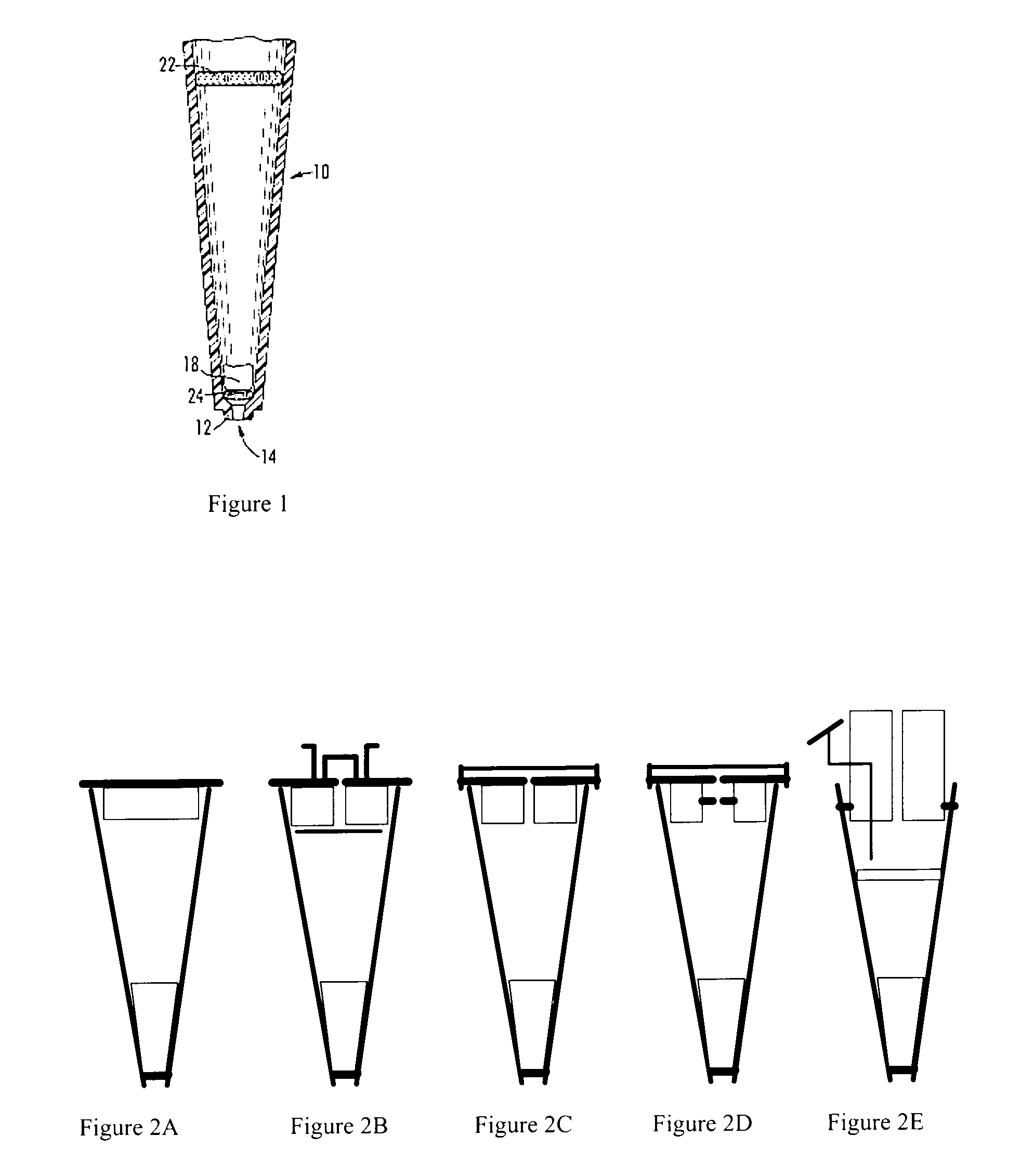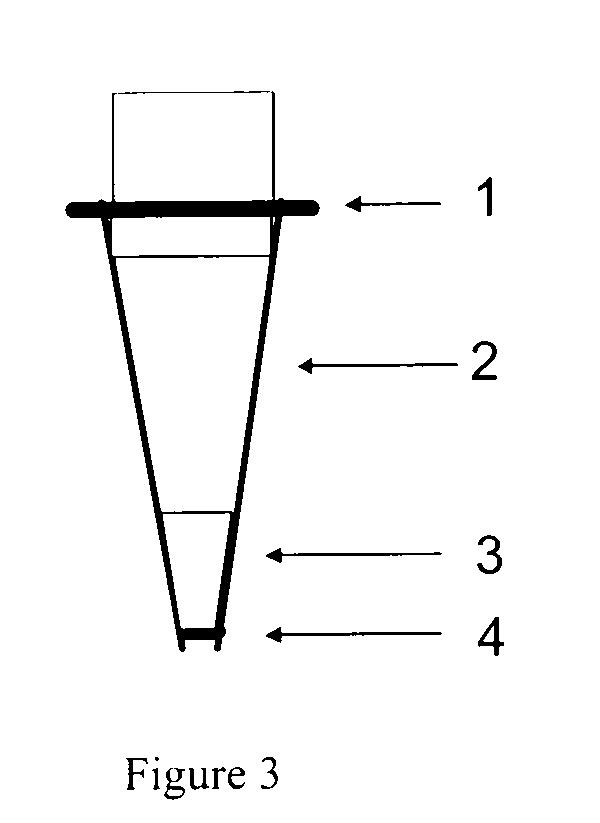Pipette tips for extraction, sample collection and sample cleanup and methods for their use
a pipette tip and pipette technology, applied in the field of extraction and/or sample collection devices, can solve the problems of ineffective analyzing viscous liquid sample solutions such as whole blood, the invention of sorbents cannot utilize small particles, and the device cannot process semi-solid samples such as waste water or tissue homogenate, so as to extend the extraction of analyte and the effect of application
- Summary
- Abstract
- Description
- Claims
- Application Information
AI Technical Summary
Benefits of technology
Problems solved by technology
Method used
Image
Examples
example 1
[0052]A comparison of recoveries of organophosphates (common pesticides, namely prometon, chlorothalonil and chlorpyrifos) extracted from blended lettuce extract using DPX and HP-DPX is shown in FIG. 7. The peaks in the GC chromatogram obtained following the use of HP-DPX (A) are much higher than those obtained by DPX (B). The higher recoveries are a result of the greater surface area of the smaller particle size material. It should be noted that these extractions were obtained by elution from the top using a 3-way valve adaptor.
example 2
[0053]An example of DPX-CX for the extraction of basic drugs from urine is shown in FIG. 8. The urine was spiked with a mixture of basic drugs at 0.5 ppm, with 0.2 mL extracted, and the resulting chromatogram is shown. All of the basic drugs were rapidly extracted in under 2 minutes and efficiently recovered (>90%) using the DPX-CX tips. The drugs analyzed were methadone (1), methaqualone (2), amitriptyline (3), cocaine (4), imipramine (5), doxepin (6), desipramine (7), SKF (an internal standard (8)), codeine (9) and oxycodone (10). With these tips, one method can be used to effectively extract and analyze practically any basic drug of interest. This example represents the fastest and most efficient method for extracting basic drugs from biological matrices.
example 3
[0054]An example of DPX-IA is exemplified by the HPLC chromatogram depicted in FIG. 9. HPLC chromatogram (with fluorescence detection) was recorded following DPX-IA extraction of 20 ppb aflatoxin B1 (peak at 6.4 min) from corn meal. Aflatoxin B1 is a highly toxic substance that is routinely screened in foods such as corn and corn based products. This extraction represents the most selective and fastest of its kind, taking less than 90 seconds to perform (following the blending of the sample). The addition of methanol (or acetone or other solvent) causes the antibody to denature and thus “release” the bound analyte. Due to the high selective binding of antibodies, negligible interference from sample matrix components occurs, even given the low concentration of analyte. The extraction, after blending the sample matrix with solvent, took much less time than the chromatographic analysis (with the peak at 6.4 min (arrow) being aflatoxin B1.
PUM
 Login to View More
Login to View More Abstract
Description
Claims
Application Information
 Login to View More
Login to View More - R&D
- Intellectual Property
- Life Sciences
- Materials
- Tech Scout
- Unparalleled Data Quality
- Higher Quality Content
- 60% Fewer Hallucinations
Browse by: Latest US Patents, China's latest patents, Technical Efficacy Thesaurus, Application Domain, Technology Topic, Popular Technical Reports.
© 2025 PatSnap. All rights reserved.Legal|Privacy policy|Modern Slavery Act Transparency Statement|Sitemap|About US| Contact US: help@patsnap.com



